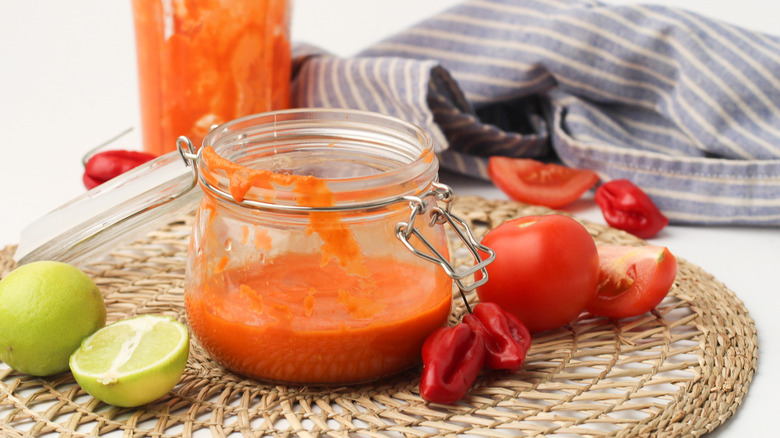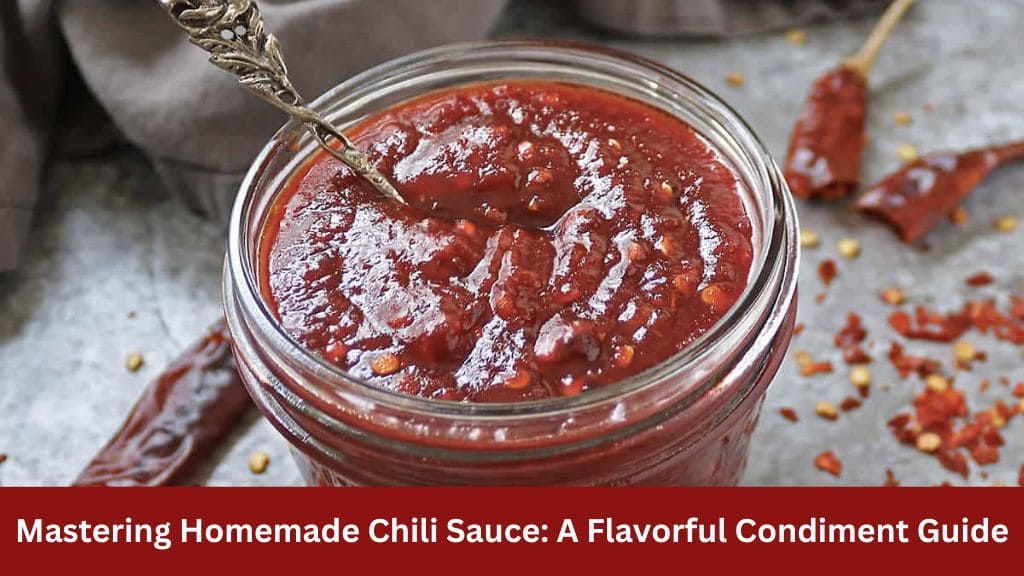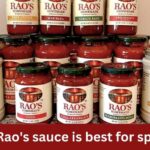In the realm of culinary adventures, few things offer as much satisfaction as creating your own condiments. Among these, homemade chili sauce stands out as a versatile and flavorful option that adds a delightful kick to various dishes. In this comprehensive guide, we’ll explore everything you need to know about crafting your own batch of homemade chili sauce, from ingredients and preparation to serving suggestions and storage tips.
Why Homemade Chili Sauce?

Flavor Control
One of the primary benefits of making chili sauce at home is the ability to tailor the flavor to your preferences. Commercial varieties often come with a standard set of seasonings, but when you’re in charge of the kitchen, you have the freedom to adjust the spice level, sweetness, and tanginess to suit your taste buds.
Quality Ingredients
By making chili sauce from scratch, you have control over the quality of ingredients you use. You can choose fresh, organic produce and avoid additives or preservatives commonly found in store-bought options. Plus, the satisfaction of using ingredients you’ve selected yourself adds an extra layer of enjoyment to the cooking process.
Customization
Homemade chili sauce recipes are highly adaptable, allowing you to experiment with different combinations of peppers, spices, and sweeteners. Whether you prefer a mild, sweet sauce or a fiery, tangy concoction, you can tweak the recipe to create your ideal blend of flavors.
Ingredients

Base Ingredients
- Tomato Paste: 6 ounces (1 can)
- Sweeteners:
- Brown sugar: 1/4 cup
- Honey: 2 tablespoons
- Vinegar:
- Apple cider vinegar or white vinegar: 3 tablespoons (adjust to taste)
Seasonings and Flavor Enhancers
- Paprika: 1 teaspoon (use cayenne for spicier)
- Worcestershire Sauce: 1 teaspoon
- Garlic Powder: 1/2 teaspoon (or more to taste)
- Red Pepper Flakes: 1/2 teaspoon (or use hot sauce, to taste)
- Allspice: 1/4 teaspoon
- Cinnamon: 1/8 teaspoon
- Cloves: 1/8 teaspoon
- Salt and Pepper: To taste (usually 1/4 to 1/2 teaspoon)
Optional Ingredients
- Cayenne Pepper: For extra heat, if desired
- Hot Sauce: To taste for additional spice
- Additional Spices: Customize with your favorite herbs and spices to elevate the flavor profile
Preparation

Step 1: Whisk the Ingredients
To begin, gather all the required ingredients listed in the recipe. Measure out the specified quantities of tomato paste, sweeteners, vinegar, and seasonings. Using a large mixing bowl, combine these ingredients together.
Ensure thorough mixing by whisking the ingredients vigorously until a smooth and uniform consistency is achieved. This step is crucial for evenly distributing the flavors throughout the sauce. While a whisk works well for this task, you may also opt to use a blender or food processor for a smoother texture.
Step 2: Simmer for Flavor
Once the ingredients are well combined, transfer the mixture to a saucepan or pot. Place the saucepan over medium-low heat on the stovetop. Stir the mixture occasionally to prevent sticking and ensure even heating.
Allow the sauce to simmer gently for approximately 10 minutes. During this time, the flavors will meld together, intensifying and developing a richer depth of taste. The simmering process also helps to thicken the sauce slightly, enhancing its texture and consistency.
Step 3: Taste and Adjust
After simmering, carefully taste the chili sauce to evaluate its flavor profile. Adjust the seasoning as needed to achieve the desired balance of sweet, tangy, and spicy elements. You may find that additional salt, sugar, or spices are necessary to perfect the taste according to your preferences.
If the sauce is too thick for your liking, you can thin it out by adding a bit of water gradually until reaching the desired consistency. Keep in mind that the sauce will continue to thicken slightly as it cools, so it’s better to err on the side of slightly thinner consistency during this stage.
Step 4: Cool and Store
Once the chili sauce has reached the desired flavor and consistency, remove it from the heat and allow it to cool completely. Transfer the cooled sauce to a clean, airtight container for storage.
Refrigerate the chili sauce to prolong its shelf life. Stored properly, homemade chili sauce can last for several weeks in the refrigerator. For longer-term storage, consider freezing the sauce in smaller portions, such as ice cube trays or freezer-safe containers, for convenient use in future recipes.
Serving Suggestions

Dip for Seafood
Homemade chili sauce serves as an excellent accompaniment to seafood dishes, particularly when used as a dipping sauce. Its sweet and tangy flavor profile pairs beautifully with the natural brininess of shrimp, crab, or lobster. To enjoy, simply serve chilled seafood alongside a bowl of chili sauce for dipping. Alternatively, incorporate the sauce into seafood appetizers or sushi rolls for an extra burst of flavor.
Condiment for Burgers and Hot Dogs
Upgrade your burger or hot dog game by swapping out traditional condiments like ketchup or mustard for homemade chili sauce. Spread a generous dollop of chili sauce onto your burger bun or hot dog for a bold and flavorful twist. The combination of savory meat and tangy sauce creates a mouthwatering flavor sensation that will have your taste buds singing.
Marinade for Meatloaf
Take your meatloaf recipe to the next level by incorporating homemade chili sauce into the mix. The sweetness of the sauce adds depth of flavor and helps to keep the meatloaf moist and tender during cooking. Brush a layer of chili sauce over the top of the meatloaf before baking for a delicious caramelized glaze. The result is a savory and succulent meatloaf that’s sure to become a family favorite.
Flavor Booster for Various Dishes
Don’t limit yourself to traditional serving suggestions—get creative with how you use homemade chili sauce in your cooking. Add a spoonful of chili sauce to soups, stews, and stir-fries to infuse them with an extra kick of flavor. Use it as a marinade for grilled chicken, pork, or tofu to impart a delicious smoky flavor. The possibilities are endless, so don’t be afraid to experiment and discover new ways to incorporate chili sauce into your favorite dishes.
Conclusion
Homemade chili sauce is a culinary gem that elevates dishes with its bold flavors and versatility. By mastering the art of crafting your own sauce, you gain control over the ingredients, flavor profile, and texture, allowing you to create customized condiments tailored to your taste preferences. Whether you’re dipping seafood, slathering burgers, or spicing up soups, homemade chili sauce is sure to become a staple in your kitchen repertoire. So grab your apron and whisk, and embark on a delicious journey of chili sauce creation today!





